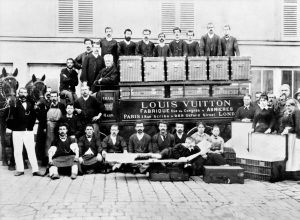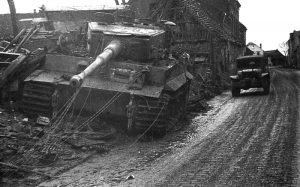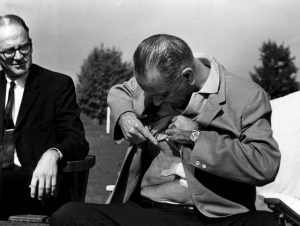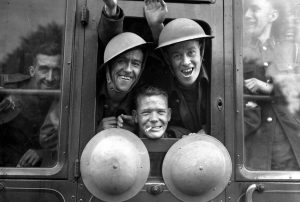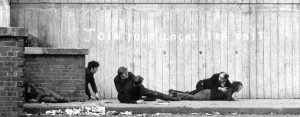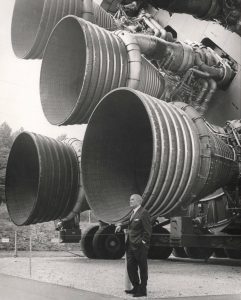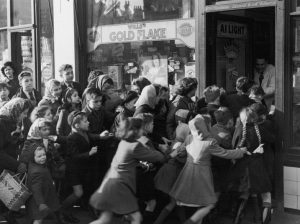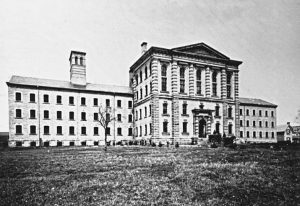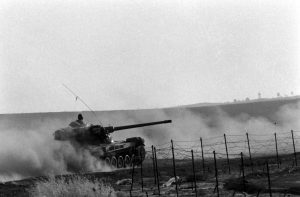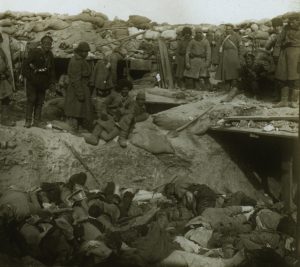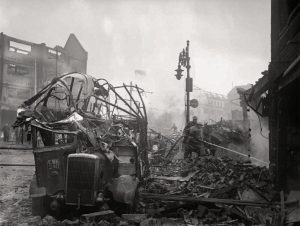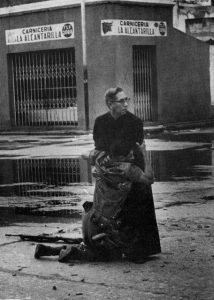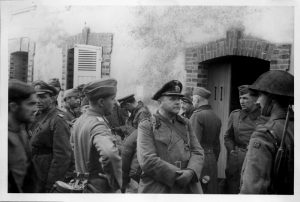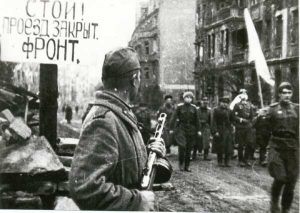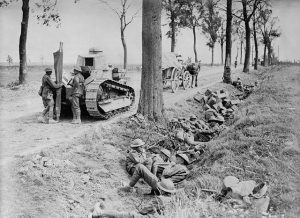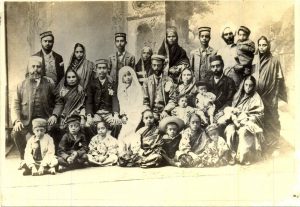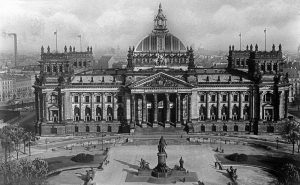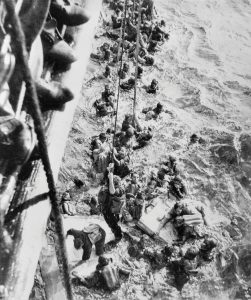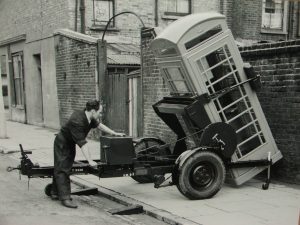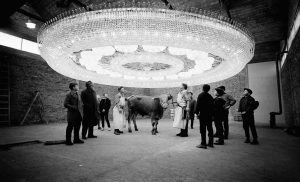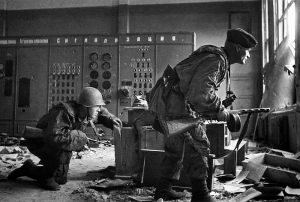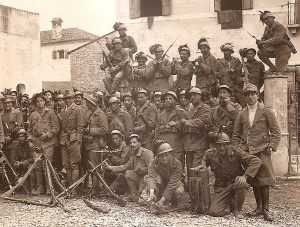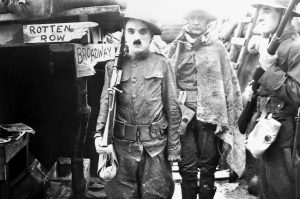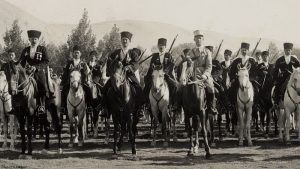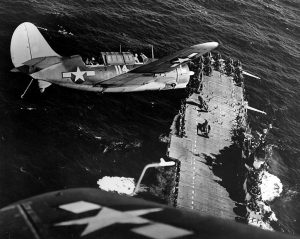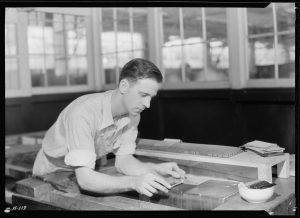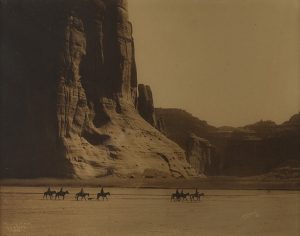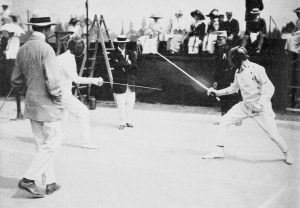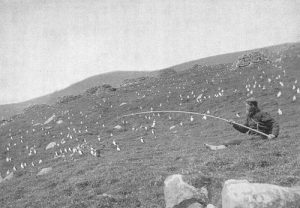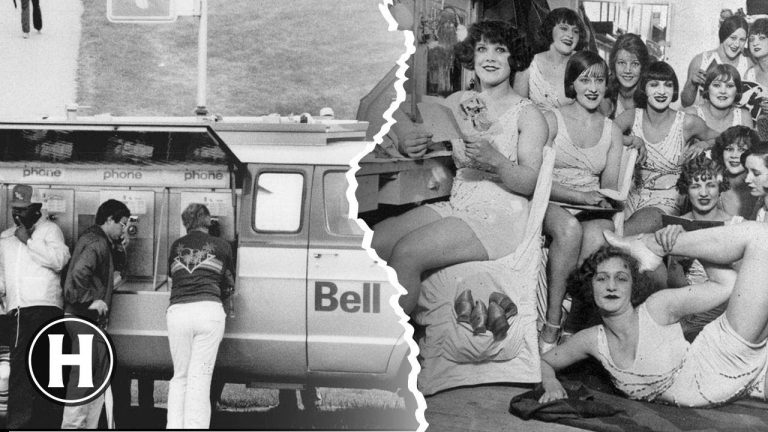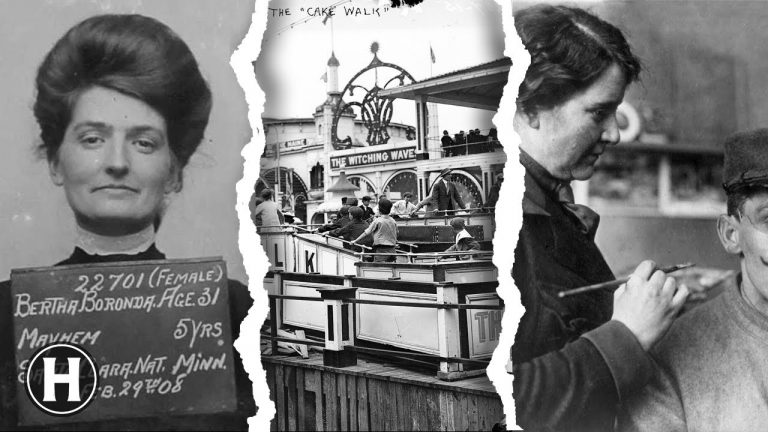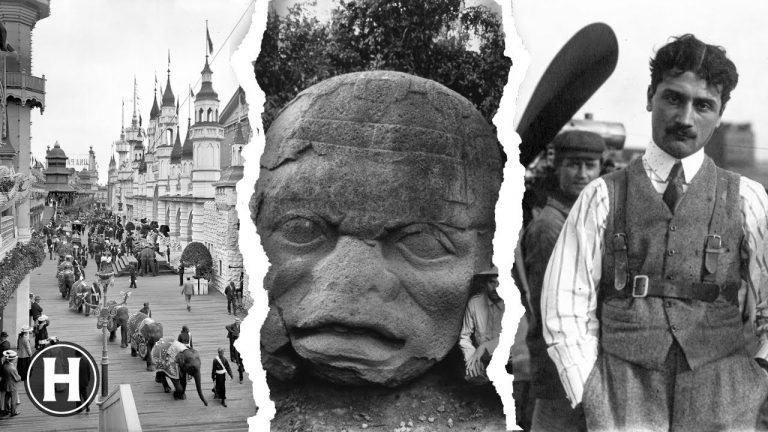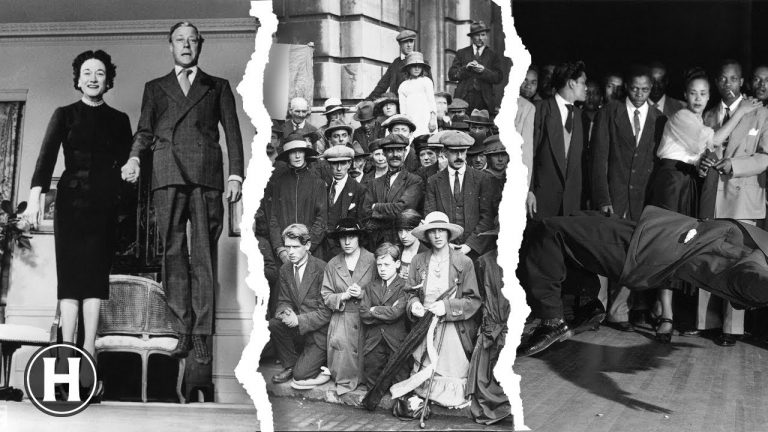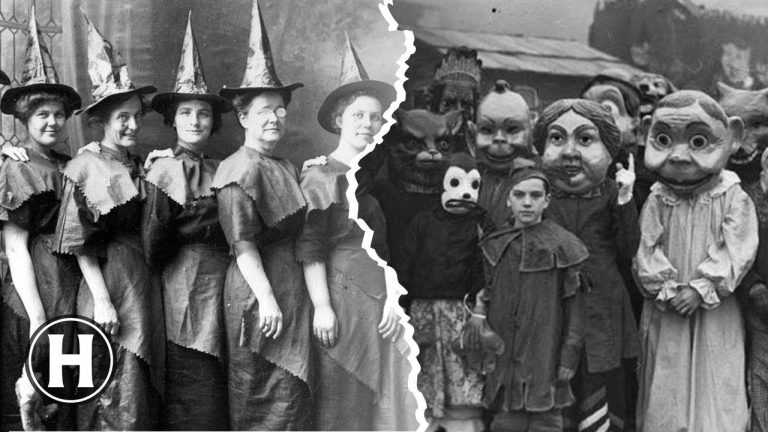Explore global history through a photographic tour, from 1944’s war-torn France to the pomp of Mughal Emperors, protests in Iran, and moments of courage during World War II. Unfolding stories of occupation, tragedies, and incredible technological leaps, envelopes you into the depths of time.
R.C.A.M.C. Sisters in France (1944)
The first nursing sisters of the Royal Canadian Army Medical Corps who landed in France after D-Day were among the few women in combat zones during WWII. Their brave service provided crucial medical care in the aftermath of one of history’s largest seaborne invasions.
Pilot-Bombardier Over Sevastopol (May 1944)
In May 1944, the Siege of Sevastopol, a battle during WWII, reached its final stage. The pilot-bombardier over Sevastopol would have seen a city reduced to rubble, embodying the savage destruction of the largest-scale armed conflict in human history.
“Yamato Built at Kure Naval Base” (1941)
Yamato was the heaviest & most powerfully armed battleship ever constructed, with nine 46 cm Type 94 naval guns, the largest ship-mounted artillery pieces in history. Its design was so secret that workers constructing weren’t aware of the full scale of the project.
Jeanne d’Arc School Fire (1945)
On 21st March 1945, the Jeanne d’Arc School, situated on Maglekildevej at Frederiksberg, was accidentally set on fire during the Operation Carthage bombing by British forces, aimed at destroying the Gestapo headquarters in Copenhagen.
Mughal Emperor (1858)
The only known photograph of a Mughal Emperor is of Bahadur Shah Zafar II, taken in 1858. Captured by photographer Robert Tytler, it intriguingly depicts the king in a garden, with a hookah, shortly before his exile by the British to Burma.
Girl Interrupts Army Patrol (1969)
This photo captures the intensity of the Battle of the Bogside, 1969. Amidst the chaos of the first major conflict in Northern Ireland’s Troubles, a seemingly oblivious little girl on roller skates interrupts an army patrol, symbolizing childhood innocence amidst turmoil.
Iran Hostage Crisis Protest (1979)
The US embassy in Tehran was seized in 1979 due to rising anti-American sentiment, leading to a 444-day hostage crisis. 52 Americans were held captive by Iranian students demanding the US return their ousted Shah for trial. It ended with the signing of the ‘Algiers Accords’.
Theodore Roosevelt Inauguration (1905)
The longest inaugural address in US history was given by President William Henry Harrison in 1841, lasting 1 hour and 45 minutes. Tragically, he fell ill from pneumonia shortly after, leading to his death just 32 days into his term.
Boy in Smoldering Ruins (1951)
This haunting image by Jim Pringle, 1951, captures the bleak reality of the Korean War, as a boy sits amidst his burnt home. Allied forces, in a controversial strategy, burnt homes to hinder North Korean troops using them as shelter.
Victims of Bombing: Berlin (1943)
During WWII, bombing raids by Allies caused widespread destruction in Berlin. In December 1943, after a particularly deadly raid, victims were laid out in a gymnasium for a grim task—identification and burial—a haunting testament to the human cost of war.
Japanese-Americans in Internment (1942)
Despite being incarcerated in internment camps during WWII, many Japanese-American citizens expressed their loyalty to the US through art, music, and sports. Remarkably, they even built schools to ensure their children remained educated amidst hardship.
Terminal Tower (1927)
At its completion, the Terminal Tower Building in Cleveland not only stood as the second tallest building globally, but also reigned as the tallest building outside NYC until 1967. It symbolized Cleveland’s economic power during the early 20th century.
Unfinished Château Frontenac (1900-1925)
The Château Frontenac, one of Canada’s grandest hotels, was being constructed during this time. People used to enjoy wintertime activities like sledding and snowball fights nearby, serving as a vibrant juxtaposition to the unfinished, looming structure.
Louis Vuitton Workers (1888)
At this time, only 20 employees worked in this Louis Vuitton workshop. They crafted custom, made-to-order travel trunks, showcasing remarkable innovation and craftsmanship that iconicized the LV brand. Today, the Asnières site remains a pivotal part of the LV heritage.
Tiger I: Elsdorf Defeat (1945)
The Tiger I that knocked out the first M26 Pershing was not defeated in direct combat, but rather fell prey to its environment. It backed into rubble, ironically leading to its abandonment by the crew in Elsdorf, Germany, 1945.
LBJ Displays Surgery Incision (1965)
On Oct 20, 1965, President Lyndon B. Johnson surprised the public by showing his gall bladder surgery scar at an impromptu press conference. This unprecedented display was to assure the nation of his recovery and was widely photographed and commented on.
British Troops to Western Front (1939)
In 1939, despite the imminent danger, British troops showed remarkable courage as they cheerfully boarded a train for the western front, symbolizing their resilience & determination during the early stages of World War II. This highlights their spirit of duty and bravery.
IRA Freedom Fighters Pinned Down (1972)
In 1972, Northern Ireland was trapped in the violent heat of ‘The Troubles’. During this period, the notorious Belfast’s IRA graffiti appeared, seen as an act of defiance and a call to arms against British forces, transforming urban landscapes into communication tools.
Wernher von Braun and Saturn V (1969)
Wernher von Braun, a German-born American aerospace engineer, was instrumental in developing the Saturn V rocket that took astronauts to the moon during the Apollo missions. Interestingly, he was also a former Nazi scientist, a factor that stoked controversy.
Kids Rush for Candy (1953)
In post-WWII Britain, confectionery products were the last to be de-rationed in 1953, causing an outburst of joy among kids. Oddly, this sparked the “sweet rationing riot”, when kids couldn’t get their favourite treats due to high demand.
Don Jail, Toronto (1860s)
The Don Jail in Toronto was known for its architecture, inspired by a palace, when it opened in the 1860s. However, it became infamous for brutal conditions, overcrowding, and was the site of Canada’s last hanging in 1962.
Tank, Gaza Patrol (1967)
The picture from Paul Schutzer’s camera is a poignant fragment of history, capturing the intensity of the Six-Day War. Schutzer, an acclaimed Life Magazine photographer, was tragically killed on the first day of the conflict in Gaza, June 1967.
Russian Soldiers at Port Arthur (ca.1905)
This grim scene is from the Russo-Japanese War (1904-1905), where the Battle of Port Arthur resulted in one of the longest sieges of modern warfare. Despite being outnumbered, the Japanese emerged victorious, marking a significant shift of power in East Asia.
Coventry Devastated (1940)
This devastating Luftwaffe air raid, known as the Coventry Blitz, resulted in approximately 568 deaths. It marked the first use of “Moonlight Sonata” bombing strategy, where electronic aids guided bombers for precision targeting, leaving a haunting scene behind.
Last Rites for Soldier in ’62 (June 4)
This iconic photo, taken during the Venezuelan naval revolt, became a symbol of bravery and devotion. Despite the surrounding danger of bombs and gunfire, Chaplain Padillo fearlessly walked the streets giving last rites to dying soldiers.
Surrender at Normandy (1944)
On D-Day, June 6, 1944, a remarkable armada of about 7,000 vessels, including battleships, destroyers, and landing crafts, supported the invasion. Code-named “Operation Neptune”, it remains the largest seaborne invasion in history.
Soviets Escorting Germans to Surrender (1945)
The surrender negotiations in Breslau marked a crucial event in WWII, as it led to the Soviet takeover of the city. Shockingly, Breslau had been declared a festung (fortress city) to resist Soviet forces and was the last major city to surrender in WWII.
Canadian Troops at Arras (Sept. 1918)
In September 1918, Canadian troops played a key role in the Battle of Arras during WWI. The troops, using surprise and new tactics, broke through the heavily fortified Hindenburg Line, significantly contributing to the eventual Allied victory.
Jewish Family Wedding (early 20th c.)
Despite significant population reduction, there was once a thriving Jewish community in Karachi, Pakistan. Here a Jewish family celebrates a wedding, a rare look into their culture and traditions during the early 20th century.
Reichstag (1894)
The Reichstag fire of 1894 not only caused physical damage but also sparked a political crisis in Germany. This event was exploited by the Nazis, who blamed it on the communists and used it as a pretext to seize absolute power, leading to the end of the Weimar Republic.
HMS Dorsetshire & Bismarck (1941)
Though HMS Dorsetshire was sent to rescue Bismarck’s survivors on 27 May 1941, the operation was halted after 110 were saved amidst a suspected U-boat alert, leaving many still in the water. The exact number who perished is uncertain.
Installing K6 Phone Box, London (1930s)
The K6 phone box, also known as the ‘Jubilee’ phone box, was designed by Sir Giles Gilbert Scott to commemorate King George V’s Silver Jubilee. It was the first red public telephone kiosk to be used extensively outside of London.
“Glory in Slaughterhouse” (Nov. 29, 1962)
The remarkable 532 bulb chandelier built in a Darmstadt slaughterhouse in 1962 symbolizes a stark contrast between death and opulence. It serves as a metaphor for the possibility of experiencing luxuriance or glory even amidst gruesome inevitabilities.
Russian Artillery Reconnaissance Unit (1943)
Lt. I.R. Blokhin and Scout H. Zhamaletdinov of the Russian artillery reconnaissance unit were crucial in the Battle of Voronezh (1943). Their accurate mappings and keen observations provided essential information that contributed to Russia’s WWII victory.
The Arditi: The Daring Ones (ca. 1917)
The Arditi, Italy’s elite assault troopers of WWI, were known for their courage and daring tactics, such as using daggers for hand-to-hand combat and storming enemy lines without orders. They also inspired the blackshirt squads of Benito Mussolini’s Fascist regime.
Shoulder Arms: Chaplin & Co. (1918)
“Shoulder Arms” (1918) marked Charlie Chaplin’s first full-length film as director. Despite initial concerns about making a comedy of war, it was very successful and audiences appreciated the film’s lighter perspective on the dark realities of WWI.
Circassian Cavalry (1941)
The Circassian Cavalry, under Commander Colonel Collet, played an essential role during the French mandate in Syria in 1941. Despite being a diaspora, the Circassians’ warrior reputation prompted France to use them for maintaining order in the region.
SB2C Helldivers: Pacific 1944 (USS Hornet)
The SB2C Helldivers, also known as “The Beast,” were advanced dive-bombers in WWII. In 1944, these aircraft were crucial in bringing victory in the Pacific Theater, frequently landing on the USS Hornet, a prized aircraft carrier.
Gilding at Kingsport Press (1933)
In the picture, Mr. Jones is performing the intricate process of gilding at Kingsport Press in 1933. Despite the technology revolution, the skill-intensive gilding process remains a gold standard in the printing industry for its class and vintage appeal.
Canon de Chelly (1904)
The Battle of Little Bighorn, a Native American battle site, saw the defeat of the U.S. 7th Cavalry by Sioux and Cheyenne warriors in 1876. Known as “Custer’s Last Stand,” it’s one of the most famous Native American victories in U.S. history.
Olympic Games 1912 (1912)
The 1912 Stockholm Olympics marked the first use of automatic timing devices and photo finish technology in track and field events. It also had the last Olympic medals awarded for art competitions and was the first time women’s events were part of the swimming program.
Scot Catches Puffins, St. Kilda (1897)
In 1897, a Scot gathering puffins on St. Kilda Island used their meat for food, feathers for mattresses & beaks as currency, reflecting a unique survival method on this remote archipelago. Their diet consisted of 90% seabirds, an unusual dietary behavior in the UK.

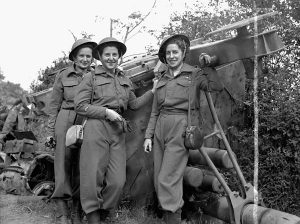
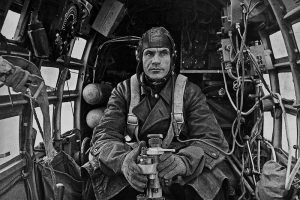
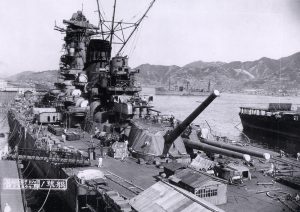
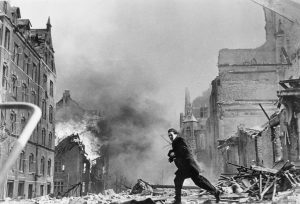
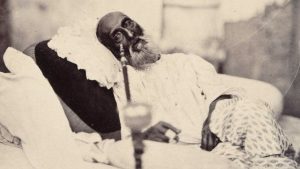
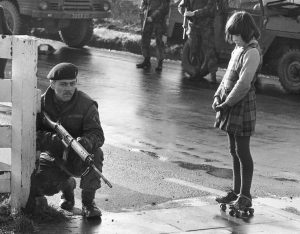
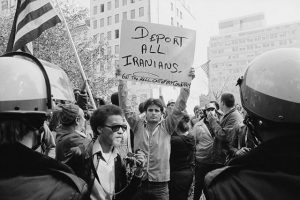
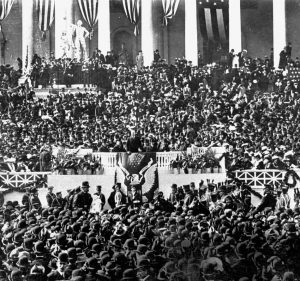
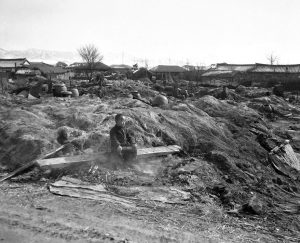
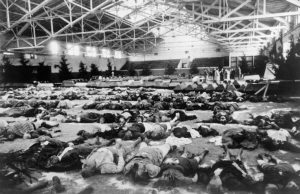
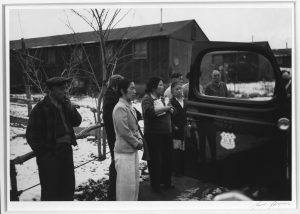
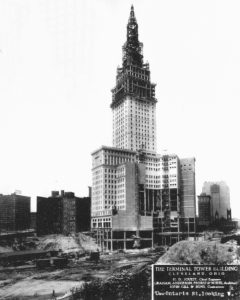
![Winter distractions near an unfinished Château Frontenac, 1900-1925 [860-641]](https://www.curiositastube.com/wp-content/uploads/2024/03/3414-300x224.jpg)
